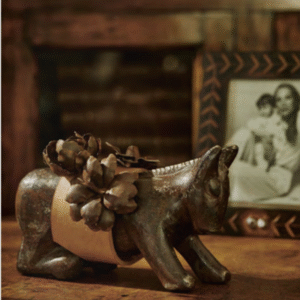WHEN THE STORY IS MISSING SO IS THE MEANING
We live in a world overflowing with products, and it’s easy to focus on aesthetics and forget the origins. This post reflects on why storytelling matters in design, craft, and culture, and how losing that connection diminishes not only the product, but the people behind it. If we want to create with integrity, we have to start with the story.
There’s a difference between a product that catches your eye and one that stays with you. The pieces we remember most aren’t always the trendiest; they’re the ones that feel familiar. A purchase becomes a keepsake, a gift becomes a legacy, and a design becomes a conversation. Without the story, the connection weakens, the origin fades, and the meaning becomes harder to hold.



Nopalera, founded by Sandra Lilia Velasquez, centers every skin and body product around the symbolism and strength of the nourishing nopal cactus. More than just a plant, the nopal carries centuries of meaning—used as medicine, food, and protection, tied deeply to curanderismo and ancestral knowledge. In Nopalera’s hands, this history becomes contemporary self-care, turning daily routines into a way to honor culture and keep traditions alive. Velasquez has said her mission is also to challenge how Mexican culture is undervalued in the U.S. market. By pairing bold, modern branding with ancestral ingredients, Nopalera reclaims space for Mexican identity with pride and unapologetic beauty.
That same reverence for tradition lives in Hernán, founded by Isela Hernández, who grew up in Del Rio, Texas. Their handcrafted olla de barro, made in partnership with Mexican artisans, is more than a vessel, it’s a keeper of flavor and memory. Brew coffee in clay, and you taste history. Hernán also creates traditional staples like mole and chocolate, always sourced in collaboration with artisans. Together, these foods carry the stories of communal life in Mexico, reminding us that to share a meal is to share culture itself. Every bite or sip carries more than flavor; it carries the presence of generations, reminding us that food is one of the most enduring storytellers we have
Jan Barboglio, a Mexican-American designer raised on a cattle ranch in north-central Mexico, brings the spirit of “making beauty from necessity” to her work. What began as a simple tool to lift a candle at her own table grew into a line of home décor rooted in memory, faith, and tradition. Each piece is handcrafted in Torreón by Mexican artisans, far from tourist markets, keeping heritage alive in every hammered curve of iron, every flicker of glass, every milagro detail. Even when loss struck, when a fire consumed part of her workshop, she turned what remained into Angel d’Fuego, a collection that speaks of resilience, rebirth, and the soul of old Mexico finding new life in modern homes.
As someone who studies Latin American art, I’ve seen how much stronger the connection is when stories are respected, not borrowed, but honored. So, whether you’re choosing what to buy or shaping what to offer, ask not just what it looks like but what it carries.
When the story is intact, meaning isn’t lost.
We see more clearly, choose more intentionally, and connect to something deeper than the product alone. Storytelling turns objects into vessels of memory, weaving identity and tradition into the everyday. And when we choose to honor those stories, we’re not only preserving culture, we’re ensuring it continues to live, breathe, and inspire in the hands of the next generation.